- Home
- News
- What’s On
- Activities for Children
- Arts & Crafts
- Autos and Bikes
- Business events
- Car Boot & Auctions
- Charity events
- Churches & Religious
- Comedy
- Dance
- Days out & Local interest
- Education
- Exhibition
- Film
- Gardening & Horticulture
- Health
- Markets & Fairs
- Music
- Nature & Environment
- Spiritual
- Sport
- Talks and Discussions
- Theatre and Drama
- Business
- Local Information
- Jobs
- Deaths
- Charity events
- Contact Us
Macclesfield: The Ripper Connection

Local author Doug Pickford is joining the ilovemacc team and will be posting occasional columns.
Some of the items have appeared in print, many have not been published before – so there’s an opportunity to learn about Macclesfield’s more unusual history.
A journalist since 1963 and editor of the Macclesfield Express for 24 years Doug Pickford eventually became known locally as ‘Mr Macc’.
For many years he published a quarterly magazine ‘Old Macc’ – dedicated entirely to memories of Old Macclesfield – sadly no longer in production but copies are still available from some local book outlets and via the web.
His previous publications include Macclesfield – those were the days; Treacle Town Tales; A Portrait of Macclesfield, Cheshire: Its Magic and Mystery and Earth; Mysteries of the Three Shires; Macclesfield Mysterious & Macabre; Myths and Legends of East Cheshire and the Moorland; Cheshire: Its Magic & Mystery; Magic, Myth & Memory and The Spirit of Macclesfield: The 20th Century in Photographs.
Doug’s first column follows.
Macclesfield: The Ripper connection
Doug Pickford
Alderman Samuel Barton was a kindly man, who was respected by his Macclesfield mill employees and townsfolk alike. The three-time married Freeman of the Borough, who lived at Parvey Cottage, Sutton, was made Mayor for the year 1858-59. Such was the esteem in which he was held by his workers at Brunswick Mill in Heapy Street that they attended his funeral en bloc. The town honoured him by naming Barton Street after him.
His wealth was substantial. He owned the Brunswick Mill, and had goods at Ormskirk and in London, plus stocks and shares. His property in Sutton included Knowles House Parvey Cottage, Parvey Farm and Kinder Fields and estates called Nettlebeds and also Lane End in Wincle.
He obviously hoped that son Thomas would follow in his footsteps at the mill and he was not to know his heir would defraud Samuel’s widow Ann Barton of thousands of pounds and flee to the USA after being accused of forging signatures on paperwork relating to the transfers of stock certificates, including London and North Western Railway Company.
It was some 16 years after Samuel’s death, in June 1886, that the then 46 year old Thomas was discovered by his family to have forged signatures during the 1870s and 1880s enabling him to sell the family’s shares in three railway companies: the London and North Western Railway Company, the North Staffordshire Railway Company and the Scinde Punjab Railway Company, amounting to £20,000. Most of it had been speculated away on the stock market and he was now virtually penniless.
The Macclesfield papers from 1886, such as the Macclesfield Advertiser and the Macclesfield Courier, kept quiet about Barton and his crimes and did not mention his being on the run. We must presume they were unaware of it, although a town such as Macclesfield must have been awash with rumours.
This changed in 1888 when his stepmother was aged 75. She was a determined lady and finally involved Macclesfield police, even though she was never going to receive compensation from her stepson.
The Chief Constable of Macclesfield was William Sheasby, whose son Henry was also to later become Macclesfield’s top policeman. One Macclesfield police inspector at the time was named Plant. Inspector Plant’s son was a contemporary of Barton and he was to later accompany Detective Inspector Frederick Jarvis of Scotland Yard to the USA with a view to identifying the golden-grey bearded Barton.
The London and North Western Railway Company initiated the hunt for, and extradition of, Barton. National Archives papers show that, on 12 November 1888, a form of indemnity for Scotland Yard’s costs was lodged with the police and a description of him was provided, along with information that he was living under the name of “Cave”.
According to one investigator, this suggests that the company had already hired private detectives to do some preliminary investigative work. At this stage it was believed that he was probably living in Philadelphia and it should not have been too difficult to track down a five feet four inches tall man with a Macclesfield accent, an English wife and three children.
Bizarrely, after his flight from justice, Samuel was to be linked with the notorious Whitechapel Murders and Jack the Ripper Scotland Yard, Pinkerton’s Detective Agency and one prime Ripper suspect Francis Tumblety.
If that was not bad enough, his name would also be linked with Irish Nationalists, and questions were to be asked in Parliament.
Suspect Tumblety was a nasty piece of work who was at odds with police in the USA, Canada and England. He was arrested on November 7th, 1888, in Liverpool on charges of gross indecency and indecent assault with force and arms.
Tumblety was then held on suspicion of the Whitechapel murders but surprisingly was bailed on November 16th and the trial postponed until December 10th. The Ripper suspect skipped bail and fled to France as ‘Frank Townsend’ and boarded the steamship La Bretagne to New York City. Many American newspapers reported that Scotland Yard men had followed him across the Atlantic – including Police Inspector Jarvis.
Jarvis was said to be with two other Metropolitan Police detectives. Some time later – on 24th June 1889 in the House of Commons, an MP asked Home Secretary Henry Matthews what business was Constable Jarvis in New York; and how long was he away from London?
That MP was Timothy Michael “Tim” Healy, QC, an Irish nationalist politician, journalist, author, barrister and one of the most controversial Irish Members of Parliament in the House of Commons who had declared his sympathy for Sinn Féin (but not for physical force politics).
His political career had begun in the 1880s under Charles Parnell‘s leadership of the Irish Parliamentary Party and continued into the 1920s, when he was the first Governor-General of the Irish Free State.
The Home Secretary answered him: “I am informed by the Assistant Commissioner of Police that Jarvis went to New York in November 1888. His business was the extradition of Thomas Barton, whom he brought back to this country on 9th April 1889, and who was afterwards convicted at the Central Criminal Court of forging transfers of London and North Western Railway Stock.”
The MP countered, asking how was it took Jarvis four months to do this?
Mr. Matthews: “I have given the Hon. Member all the information I have.”
A letter in the New York Tribune, on 26th January 1889, from Robert Pinkerton the co-owner of the famous American detective agency said: “Inspector Frederick Jarvis is here in connection with a criminal matter which has no relation whatever to Irish affairs.”
If this was true – and there is a large question mark here – then why was Jarvis in America? Superficially, he was after Barton (and the British government had an extradition warrant for him), but would this take four months?
And many in both the USA and the UK could recall that in 1884 a bomb exploded at Scotland Yard destroying the corner of the building where the Special Irish Branch had its offices.
One of these offices housed Inspector Jarvis.
American newspapers reported that a short while before the bomb attack, Jarvis had gone to New York and there recruited someone to spy on Irish Nationalists’ mail in the city post office.
Chief Inspector Jarvis had been described as a man of the world who knew his New York as well as he knew his London. In July of 1892 he was involved in the apprehension of another Ripper suspect, this time in Montreal, Canada. This was Dr Thomas Neill Cream, a killer of prostitutes known as The Lambeth Poisoner.
Less than a month after his conviction, on 15 November, Cream was hanged on the gallows at Newgate Prison by James Billington who claimed that Cream’s last words on the scaffold were “I am Jack the…”
ⓒ Doug Pickford 2016


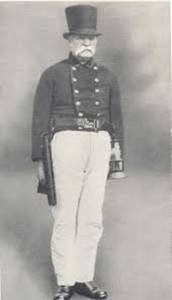
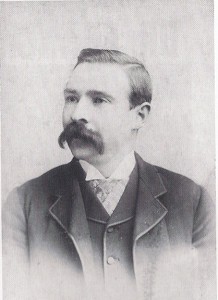
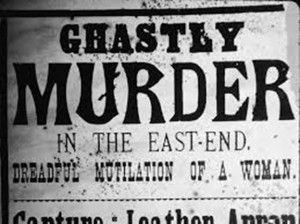
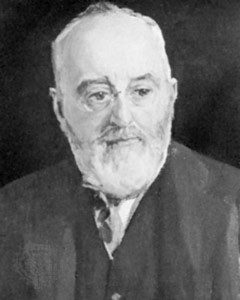
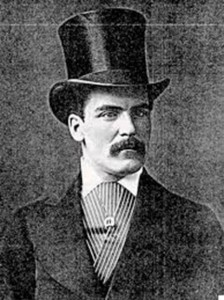
You must be logged in to post a comment Login